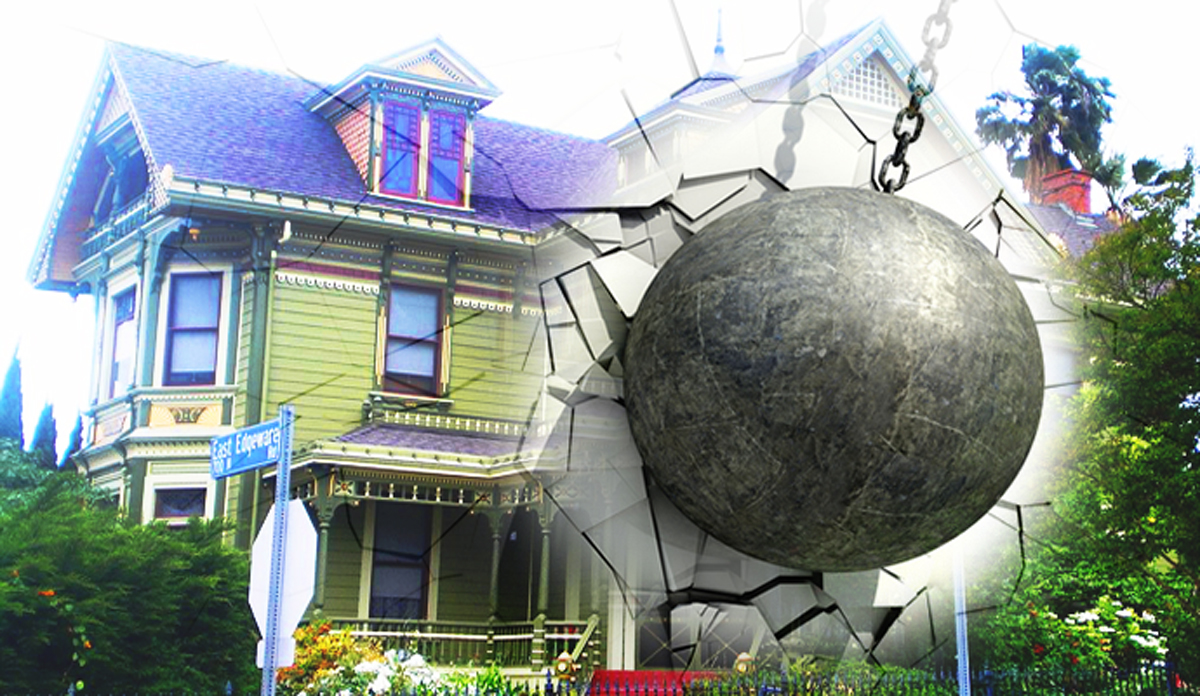Trending
What’s in a landmark? Development opponents try a new approach
Properties considered historical could add years, big cost to development projects

Wiseman Residential was still in the planning stage for a nine-unit apartment complex in Beverly Grove when a uniquely empowered group began to rally against the multifamily developer.
Activist Steven Luftman pointed to the rounded corners on the property at 106 S. Kings Road as an example of a Streamline Moderne architecture style.
When that failed to win Historic-Cultural Monument status, he turned to a former inhabitant, the late cartoonist Rudolf Ising. With Ising, Luftman attempted to save the building by associating it to a prominent figure. That failed too.
“It was never about the architecture,” said Austin Cyr, president of advocacy group Ground Up Strategies who fought the nomination. “It was about blocking what could come.”
Local preservationists and neighborhood residents are increasingly turning to landmark designations to protect buildings, effectively slowing new development in housing-strapped Los Angeles, according to real estate industry professionals. With a Historic-Cultural Nomination in place, preservationist groups can add substantial amounts of money and time to any project, deterring some developers from building altogether.
There are over 1,100 Historic-Cultural Monuments in Los Angeles, said Ken Bernstein, who oversees the commission as Principal City Planner at the Office of Historic Resources. L.A. was the country’s pioneer for landmark designation, establishing its ordinance in 1962, before other metropolitan cities like New York City, Chicago and Boston.
While their anti-gentrification goals are often noble — Wiseman has a reputation for eliminating rent-stabilized units to make room for pricier offerings, for example — preservationists have also been criticized by developers for exploiting relatively loose rules for designating protected sites.
Developer Alex Massachi, an executive at M Capital Partners, said his 89-unit residential project in Hollywood — a neighborhood that’s become notorious for developers thanks to its prevalence of historic sites — was delayed over a year because of pushback from the Hollywood Heritage preservation group. Building next to the historic “Lombardi House,” where a former United States Senator lived, also added “tens of thousands of dollars” to overall costs, he said.
“We’re facing a housing shortage and there needs to be a more streamlined process so developers can get [projects] done,” Massachi said.
Jill Stewart, executive director of the Coalition To Preserve LA, sees it differently. To her, the idea that preservationists are contributing to the housing crisis is “ridiculous,” she said.
Stewart attributes an uptick in landmarking applications to larger political forces at play. The City Council is “wiping out massive amounts of history” to “flippers” — developers who will purchase land, rezone, entitle and later sell without ever building more housing, she said. That’s caused a “panic” among Angelenos, and has led to a frenzy of preservation applications.
“The City Council almost always approves a luxury housing tower,” Stewart said. “They’re not producing needed housing.” Luxury, she said, classifies as anything that is not affordable housing.
It’s also not the job of the Cultural Heritage Commission, a five-member commission that vote on a property’s designation, to concern themselves with future development, Bernstein said.
“When a site is being designated, it’s not appropriate to be evaluating some project that might be contemplated or even proposed,” Bernstein said. “Their role at that moment is to evaluate the significance of that property.”
That “significance” can come in a variety of ways. Sites can be deemed Historic-Cultural Monuments through their architecture, either as an example of architectural style or association with renowned designer, or through associations with historic events, people or movements.
Some of the more contentious properties to be considered recently include the sprawling CBS Television City campus on Fairfax, Parker Center in Downtown L.A., Playboy Mansion, and the former Hollywood Reporter building. The city ultimately landmarked the CBS campus for its historical significance as a pioneer in the city’s television industry, while saving the Playboy Mansion in a “permanent protection covenant” that prohibits future demolition.
That subjectivity presents the biggest challenge to developers, said Jason Illoulian, CEO of development firm Faring. Aside from SurveyLA, there are few official studies that list historical sites, posing a problem for developers who might not anticipate the opposition.
Illoulian’s firm recently gained approval to adaptively reuse an iconic gay nightclub in West Hollywood as a nine-story hotel. His project was delayed a few years due to the historic nature of the venue, once the site of a shop that made early movie cameras and then an iconic nightclub in the 1980s.
“Sometimes it’s not about the architecture but about what happened there,” Illoulian said. “Yet when a project is a potential historic resource, it definitely makes a project very complicated.”
Cyr, a housing advocate who fought against Luftman’s effort to protect the site on Kings Road, said historic nominations have become so common that they’ve diluted the legitimacy of the system.
Preservationists are “using nominations as an ongoing weapon to block development and block housing,” Cyr said. “Let’s make sure our history isn’t holding us back from our future.”




